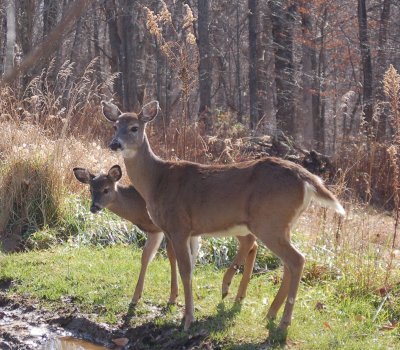
Because of the movie release, Jon Krakauer's 1996 book, Into the Wild, is once again the subject of some discussion. I was interested to read that Lorianne, of Hoarded Ordinaries, includes it in her "American Literature of the Open Road" class.
I read the book soon after it appeared in paperback, and, while I was impressed with portions of it, I found it insubstantial. (I remember thinking, "Why did I pay 12 bucks for this?" It's $14 now.)
Because Lorianne finds it worthwhile, and because I found it at the public library this week, I've taken another look at Krakauer's book. I stand by my original evaluation.
The story is simple: Young Chris McCandless walks away from his comfortable, well-educated life to live by his wits among the common folk. He has some adventures and meets nice people who like him very much. He goes to Alaska to live off the land, makes some mistakes, and dies. Jon Krakauer writes a magazine article about Chris, and gets lots of emotional letters from readers. Jon decides (a) that Chris deserves a more nuanced, detailed explication, or (b) that there's money to be made with a book, possibly even movie rights.
Drawing an unfavorable comparison between movie and book, Lorianne says:
Unlike Sean Penn's movie, Krakauer's book isn't only about Chris McCandless; it's also about how one writer discovered and pieced together Chris McCandless' story. In the film version of Into the Wild, this meta-narrative is abandoned in favor of hagiography: Chris McCandless becomes an undeniable Hero, the story of his passion and death not a mystery to be solved but a gospel to be imparted.
I like Krakauer as journalist, interviewing McCandless' family and people he met "on the road," and discussing other young men who died testing themselves against the American wilderness. For me, the author fails when he tries to analyze his own powerful reaction to McCandless.
For some reason, Krakauer fixates on whether McCandless dies as the result of poor judgement, or through a series of unfortunate accidents. I don't see much difference between the two scenarios. Some people survive really stupid mistakes, and sometimes cautious, experienced outdoorspeople die in spite of their skills. Krakauer seems to need McCandless to have died accidentally, and spends several pages defending his ethnobotanical choices.
It seems McCandless had with him a copy of Tanaina Plantlore by Priscilla Russell Kari. He used it to identify edible plants, and consumed a quantity of "wild potato" roots. The species is Hedysarum alpinum L.--alpine sweetvetch, a member of the Fabeaceae, or bean family. A congeneric species of bean, Hedysarum mackenzii --Sweetvetch/Mackenzie's Hedysarum was also present and, according to the book, not eaten by the aboriginal people. Evidently, when the roots became too dry to eat, McCandless switched to eating the seeds of "wild potato." There was some speculation that he confused the two species, and consumed the seeds of the wrong plant, poisoning himself. Krakauer insists that McCandless correctly identified his plant species, but was poisoned by eating the wrong part of the right plant.
From what I've been able to read about the two species, neither is particularly poisonous, but there seems to be continuing debate on ways McCandless could have been poisoned. Various mold infestations have also been blamed. It's not clear to me why Krakauer finds this a more acceptable cause of death than starvation, especially when you see the emaciated self-portrait photo McCandless took of himself before his death.
Here are some links on the plant species discussed, as well as the Website of an independent film on McCandless.
- "Into the Wild" Debunked from the website for the movie The Call of The Wild from Terra Incognita Films. They take issue with many of Krakauer's details, and argue at some length about starvation versus poisoning as a cause of death.
- Hedysarum alpinum L.--alpine sweetvetch--"wild potato" of Krakauer
- Hedysarum alpinum from Range Ecosystems and Plants, University of Saskatchewan.
- Hedysarum mackenzii --Sweetvetch/Mackenzie's Hedysarum--the supposedly "poisonous" species.



































